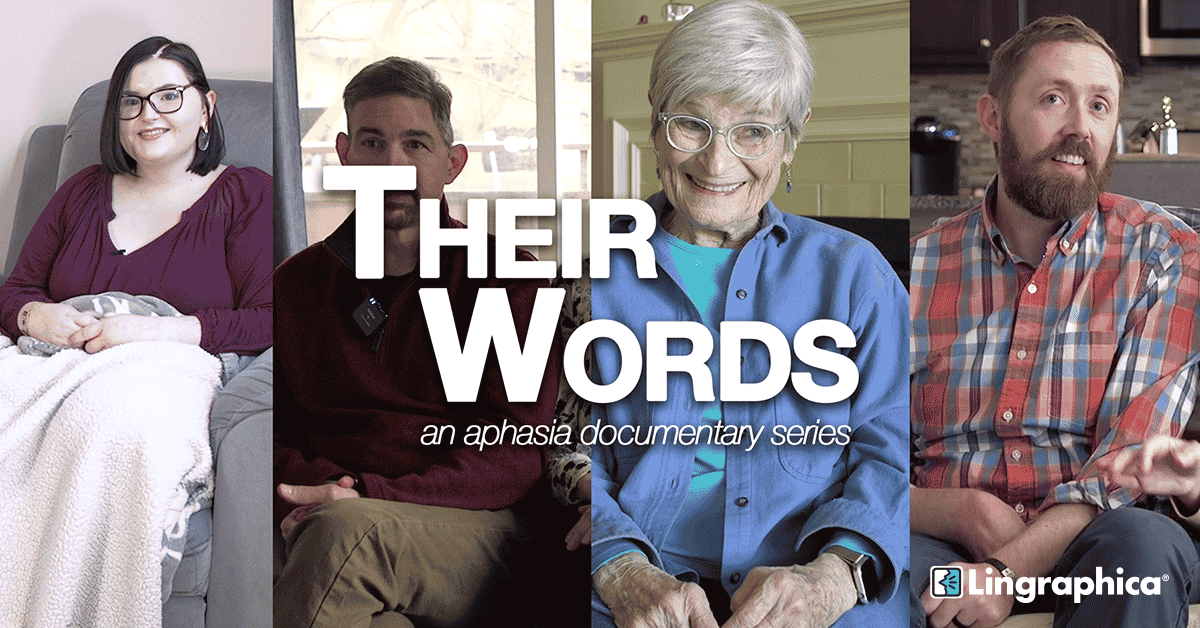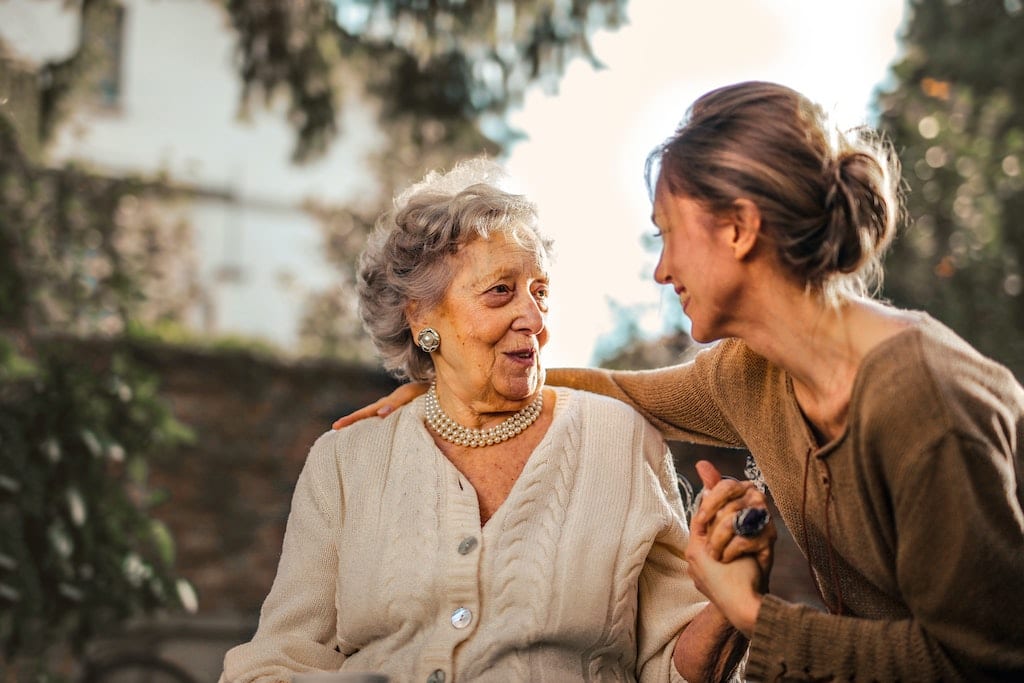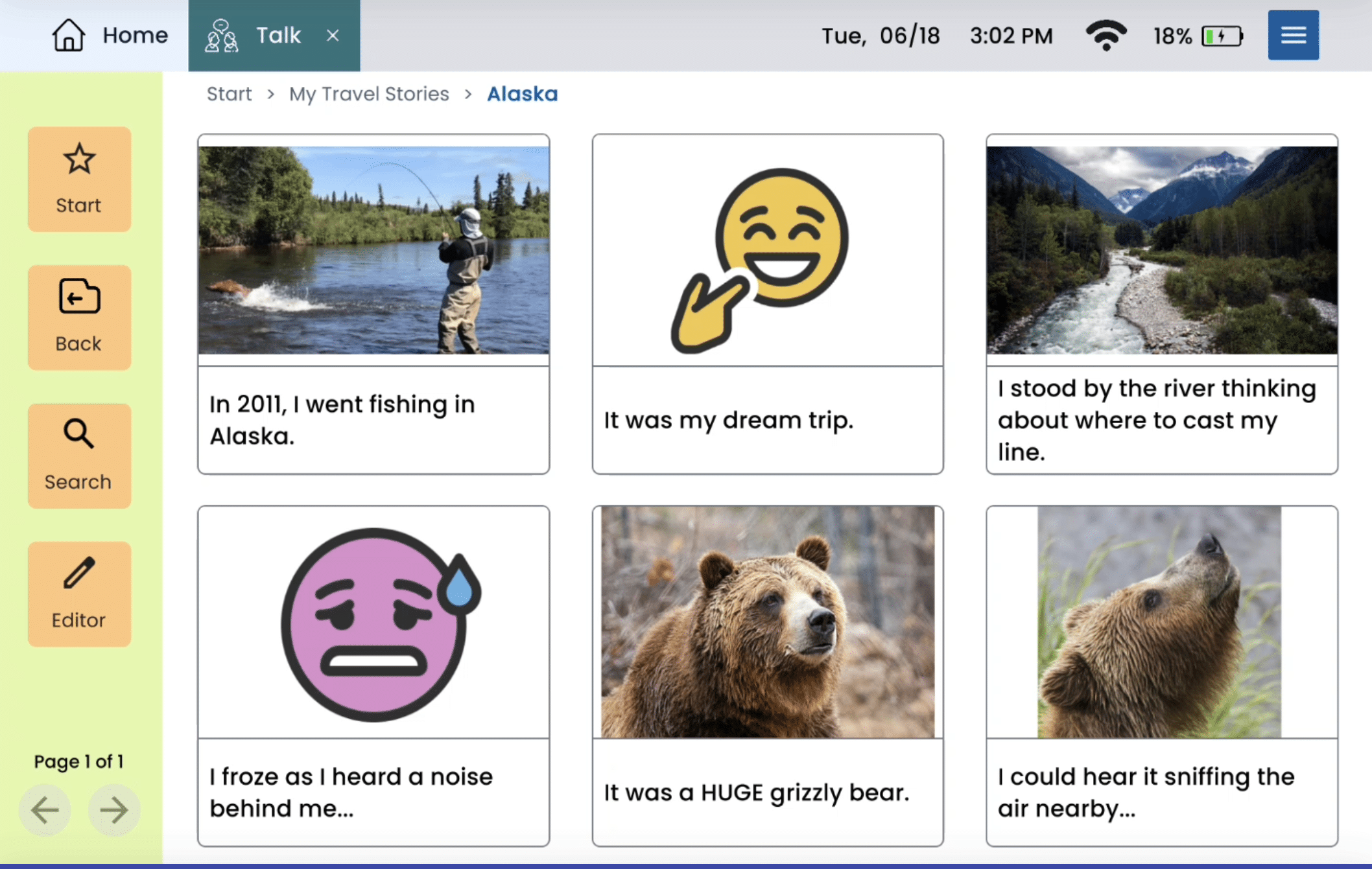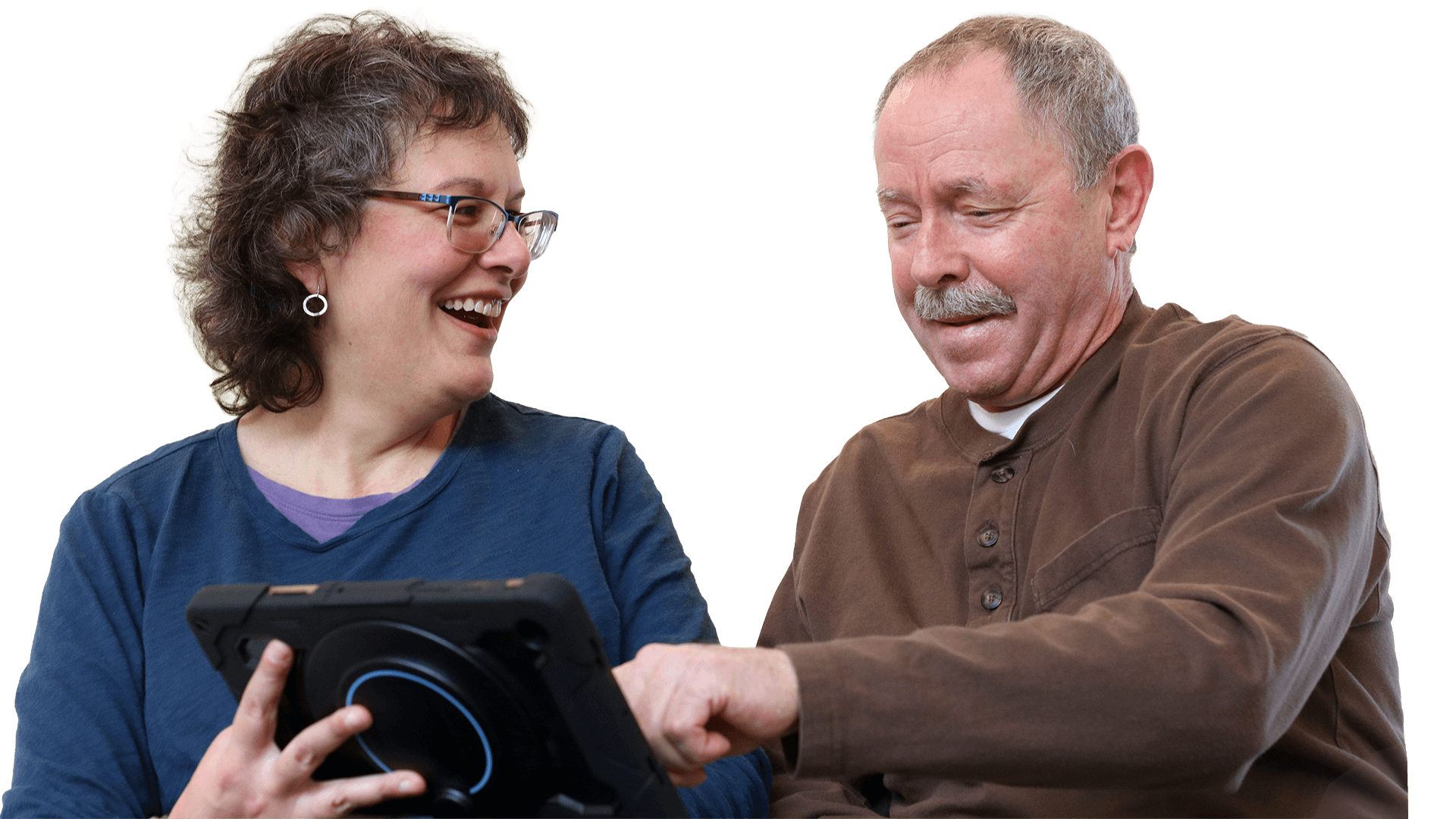A Message From Director Amy Russo On The Importance Of Diversity In “Their Words”
Published on Jun 28, 2022

My name is Amy, I’m the Video Production Specialist at Lingraphica, and I had the exciting job of directing the company’s first ever aphasia documentary, Their Words: An Aphasia Documentary Series. We wanted to get an inside, day-in-the-life view of people’s experiences with aphasia, so we decided the best way was to capture each moment in real time. Per our plan, we filmed four different people living with aphasia, and premiered their stories over the course of Aphasia Awareness Month in June 2022. It was very important to us that each profile was distinct, and the collection of people provided a diverse, colorful picture of living with aphasia. Diversity has come to the forefront of Lingraphica’s company culture, and we have been making concentrated efforts to improve our company’s diversity both inside and out.
As we worked to find the people we would eventually combine into a cast, we kept in mind the many factors that make up diversity, including:
- Race and color
- Sex and gender
- Age
- Geographic location
- Severity and acquisition of disability
- Access to healthcare
- Access to varegiving and vommunication support
Our cast does encapsulate most of those factors. With these intimate profiles, we’ve been able to showcase a broad perspective of life with aphasia.
Our glaring absence is, unfortunately, race and color. We believe this is an important issue to address as we aim to put diversity at the center of our culture at Lingraphica.
Based on a 2019 Lingraphica study, people of color living in the southeastern United States represent a significant number of people who suffer strokes and live with aphasia in America but lack the resources necessary for maximum recovery. We understand our cast appears white or passing, and that that does not represent that particularly large portion of people in need of our help and services. This is not something we want to brush under the rug or ignore simply because we do not currently reach those people in our campaigns. Our ability to reach them is part of the problem. People’s varied accessibility to things like broadband internet and recovery services that might allow them to communicate with us make it difficult for us to reach those people who may need us most – people who already struggle with language and communication, as well as making connections with people who may not see our products and services as attainable in their current situations. We want to make it clear that we are aware of these issues and are taking action steps toward reconciling them.
It is our responsibility as a leader in aphasia and communication recovery to elevate all voices in the conversation around aphasia. We do not take that responsibility lightly. As a company, Lingraphica has made significant and action-oriented changes toward more diversity, equity, and inclusion, both internally and externally, especially over the last year and a half. We are reworking our Core Values to ensure that each is established with diversity as a foundational aspect. Core Values influence how we make decisions, who we hire, leadership and management, the ways we design and market our products, and much more. We do this with intention and thoughtfulness, which is why we believe it is important to address this gap in representation in this docuseries.
Our preproduction plan included highlighting at least one subject who was part of a large, marginalized group of people in the aphasia community. This was to bring awareness and attention to those who may not have access to the resources often required to aid in maximum recovery of their aphasia. These resources often include basic healthcare, speech-language pathologists or speech therapy, hospital stays, assistive communication like speech devices or alternative methods of speech, caregiving services, physical and occupational therapy, just to name a few. Even something like internet access, which many of us assume is standard in every American household, limits people’s ability to connect with their own communities, both within aphasia and in their everyday lives. Statistically, those most affected by these systemic disadvantages are people of color.
When we put out the original casting call, we did so by posting in a Facebook Group run by Aphasia Recovery Connection (ARC) that allowed anyone in the group to apply for an interview. We did not specify demographics other than geographic location (within the U.S.), in an attempt to cast a wide net, understanding that many people with communication disorders are not likely to be comfortable on camera. This casting call allowed anyone within the group to either submit a video or book a Zoom meeting with me to “auditon.” As it turned out, so many people wanted to apply that my calendar effectively ran out of slots, and my inbox was seeing some pre-taped submissions. We jumped into the interview process right away, and I spoke to so many wonderful people wanting to share their stories.
After interviews, we compiled the list of candidates to select our cast. I recognized the issue of Race and Color from the outset, but here I was, with deadlines to begin production quickly approaching and a group of willing, diverse subjects. We would see people with aphasia from all walks of life. Still, I did not want to leave this issue unaddressed, especially keeping our original goal in mind. So, I want to address some questions that might be looming about the audition and selection process.
Why didn’t you put out another casting call?
Very simply, this was a time issue. Casting takes an incredible amount of time and effort, and the first round of interviews alone took over a month. We needed to get this project done and delivered by June, Aphasia Awareness Month, and there was, unfortunately, no time to fit in another round of interviews and still make all the necessary deadlines to film. This may not be a satisfying answer to some, so it is also important to remember that this is not a typical film production – this is a very small team within a relatively small corporation embarking on an ambitious artistic project. Our resources are, at times, very limited, including the resource of time.
Did only white people apply?
I’m not at liberty to divulge who applied, for the sake of their safety and privacy. I am also not at liberty to assume or ask for anyone’s race or ethnicity. The choice of casting was made with our overall plan in mind, and we had to make selections from the pool of submissions we got.
Why did you put out the casting call to only one group on Facebook?
This was originally meant to be a starting point. I did not anticipate the volume of submissions I got, which was a great surprise, but it also meant we had to make the decision to close our submission deadline. We do recognize this was a very concentrated group of people, but I would like to share some stats with you about the membership of the group that the opportunity was shared with:
- 12,576 Members
- Ages 13-65+
- All genders
- Dozens of U.S. cities spanning all coasts, as well as over 13 different countries across the globe
Why didn’t you specify race on the casting call?
A few reasons for this. The first one is that diversity means so many things. I did not want to discourage anyone from submitting – as exemplified by our current cast, we still see so much diversity among people with aphasia. Second, I did not want to fall into the trap of tokenism. We did not want to cast on the basis of race alone and instead opened the forum to allow anyone and everyone with aphasia to participate. The third is that I wanted to allow our goals to shift and change as we were presented with submissions. I couldn’t predict who would volunteer for this project, and I was eager to be surprised and let people tell their stories.
What should people do now if they want to participate in something like this with you?
There will be so many more opportunities for us to connect with our aphasia community after this project! That’s the whole point! We want this to be the thing that kicks in the door and really opens up the room for everyone with aphasia to feel they can engage with us. Our table is ever-growing, and we want everyone to have a seat at it. Keep an eye out for upcoming projects with Lingraphica and our partners – our mission is you!
So what are you going to do about it now?
There are several action steps we are taking away from this experience. The first is re-upping our commitment to diversity within Lingraphica Core Values. This means taking diversity into consideration every step of the way, to ensure we are providing a safe, equitable experience for our employees, customers, their caregivers, and clinicians.
The second is exploring opportunities and creating systems to continue offering access to our products and services to those who may be in systemically disadvantaged situations, such as those without healthcare or broadband internet. Communication is not only a human right, but a human need, and we want to play an integral role in helping those who struggle to communicate on their own.
The third action step is this: opening the forum. We want to participate in the conversation around diversity, equity, and inclusion, and are making a committed effort to stay curious, establish new norms and processes around DEI, and contribute to cultural change that benefits every single person we serve. We are a company that helps people communicate, so we want to communicate with you.
We hope this docuseries sheds a light on the experience of aphasia, the richness of life surrounding these people and their loved ones, and what still has to be done to continue helping our community. We’re excited to explore it with you.
About Contributor
Lingraphica helps people with speech and language impairments improve their communication, speech, and quality of life. Try a Lingraphica AAC device for free.













